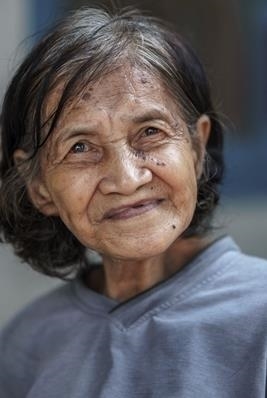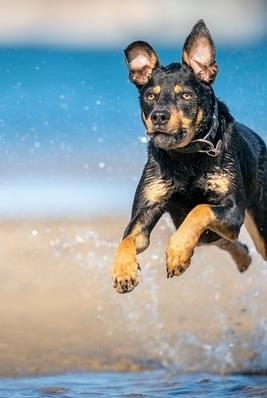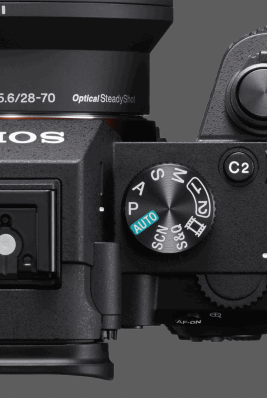Street photography is an extremely important genre of photography for not only documenting the human condition as it is in the present moment, but for bringing to attention the candid, often-overlooked moments of everyday life.
It's a hard, but rewarding genre of photography, one that is close to my heart, and one that I hope I can help you on your journey with. Let me show you why street photography is so important, as well as some tips on how to get better at it.
The Art of Street Photography
Understanding street photography
But first, what exactly is street photography? And why is it so important?
Well, contrary to what you might believe, especially now with short-form videos going viral about it, true street photography isn't about taking portraits of people on the street. Although yes, doing so is taking a photo, on a street, in the most literal sense of the phrase, understanding the true art form of street photography is important to understanding how to create good street photography images.
At its core, true street photography should be candid, unplanned, raw. On a practical level, Street Photographers capture the often-overlooked beauty of everyday life, of fleeting moments, and ephemeral thoughts. There is no "staging" a true street photography shot. There is no posing. There is only documentation. This is often generally agreed upon among true Street Photographers.
Where it can get a little muddy is "what" we're shooting; the "what" and the "meaning" behind it. For me in terms of meaning, what I've created for myself and abided by for many years is more akin to the idea that street photography is about "The documentation of people, places, and cultures". It's an expression of humans and how we live. It's about documenting the human experience - what it is like to be a human. How do we live? Where do we live? Who do we live with? It's photography generally about people, yes, but also about our environments, about our relationships to the world and to each other, about our emotions within ourselves and towards the world.
Taken to the extremes, this is important stuff. This is the stuff we view now as history, the documentation of a specific moment on the timeline of humanity.

Sony Alpha 9 | 1/200s | f/2.8 | ISO 3200
History and evolution of street photography
The early custodians of street photography knew this.
When photography was first invented in the 18th century, innovators like Louis Daguerre and Charles Negre were among the first people to try to attempt the photographing of life on city streets. As photography was such a new invention, back then, they were extremely limited by slow shutter speeds causing their images to look devoid of people or so blurry as to not really capture the essence of what it meant to be a human living in a busy city.
But still, these images were the first real glimpses of what life was like back then. These were some of the first real recollections of what it was like to live in that time. To be able to see that far back in time - this is the power of photography.
In the early 20th century, portable solutions were created and the introduction of the 35mm film camera became the de-facto standard of technology when it comes to taking photos. During this time, culturally significant photographers like Henri Cartier-Bresson rose to fame, a man who is often called the "father of modern street photography". Cartier-Bresson was specifically known for coining the term "the decisive moment", an idea that is very important in street photography and still holds very true in today's photography. This is an idea we'll cover later on in the article.
It was from this time that photography was becoming more portable and more refined, meaning it was also more approachable. We see many cases of this in the mid-20th century where soldiers were using them to document significant important events such as World War II. However, it was after the war where photography really started to grow, alongside urban and population growth in cities like New York, London, and Paris. All this time, the medium of photography and film was still mostly done in Black & White. It wasn't until the mid to late 20th century that the technology for full colour was invented, and it wasn't until the late 20th century that it was even adopted by Street Photographers at large.
Once colour street photography hit the main stage, it changed everything. Interpretations towards how photographers were composing their images were diversifying, with increased ability to focus on other aspects of an image such as colour and depth, rather than just the old dodge and burn techniques so commonly seen up until this period. This flourishing of interpretation continues to this day, with digital cameras changing how we shoot and the amount of flexibility we have in the modern-day equipment we use.
Importance of street photography
But the core of what street photography is hasn't changed. It is still about the candid documentation of humans. And hopefully, it will always be this way. It's important because we need mediums to record life as it is, right now, so that we can look back on it in the future. Street photography provides us with an amazing modality of bringing up memories and experiences; to be able to tell stories to current and future generations alike. To show others what life was like, fractions of a second at a time.
Mastering Street Photography with Sony Cameras
Choosing the right Sony camera for street photography
Choosing the right Sony camera for street photography is a fairly straight-forward affair. When it comes to camera choice, there are two main things that are really important to street photographers: Burst Rate and Autofocus.
In an ideal scenario with unlimited budget, cameras like the flagship Sony Alpha 1 and its 30fps burst rate, or the Alpha 9 III with its 120fps burst rate would be the ultimate goal, however for most people, these kinds of cameras can be quite expensive and not really worth it unless you’re a pro-level photographer.
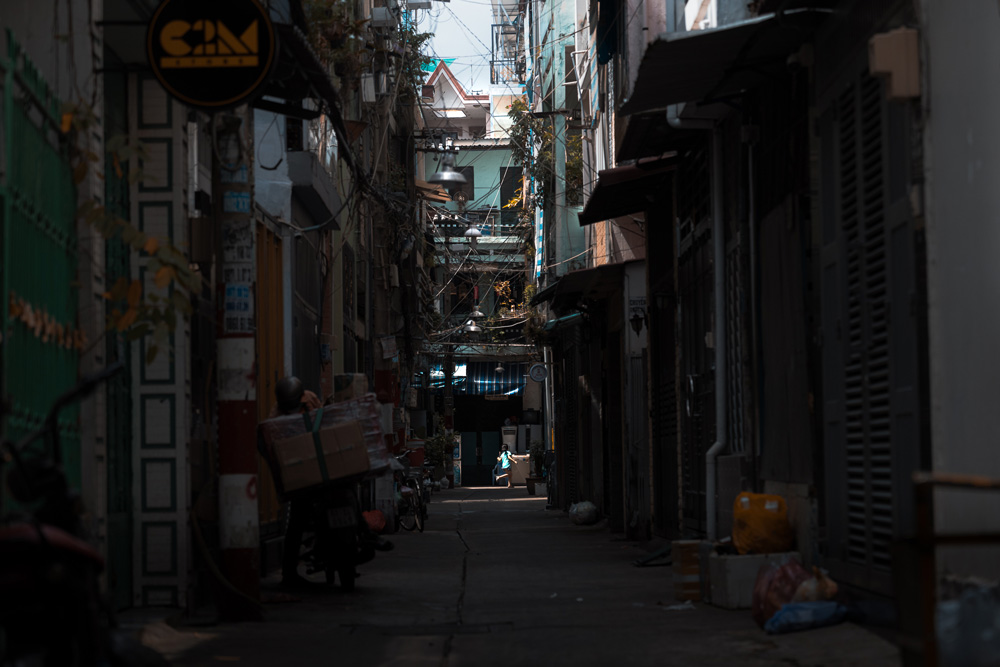
Sony Alpha 9 | 1/2000s | f/2.8 | ISO 125
The Alpha 7 series of cameras are usually limited to around 10fps of burst rate depending on your model, but I find that this is more than adequate for 90% of scenarios. I’m particularly fond of the Alpha 7C-line of cameras, and I use the Alpha 7CR on a daily basis.
This is the same case with the Alpha 6000 series of cameras too. So long as you can achieve around a 10fps burst rate or more, all of these cameras have the autofocus performance to match. In this series, I’m particularly fond of the Alpha 6700 – it’s a fantastic all-round camera and great for street photography.
Camera settings and techniques for street photography
One of the main benefits of using Sony cameras is that the autofocus performance is fantastic. This is important because in street photography, we often have many potential subjects and objects moving across the frame very quickly, and we need to be able to track them properly.
One of the most important settings to use is AF-C, or Autofocus Continuous. This setting causes the camera to constantly update the focus on the Autofocus point. This means that we were using, say, a Spot Focus Area, everything in that spot, regardless of the distance away from the camera it is, should be in focus. So in the event that we are capturing people in the frame, even if the person is walking away or toward the camera, they should be in focus.
A related setting I'm particularly fond of is Tracking. Setting the Focus Area to Tracking: Spot is my favourite, as I'm able to spot select my subject, half-press and hold the shutter button, and the camera will automatically lock focus on that subject and keep it locked on for the entire duration of the sequence. This is a powerful setting that allows me to not only keep the subject in focus for the entire time they're moving, but it also allows me to quickly reframe my compositions while keeping the subject in focus.
As I've alluded to earlier in the article, your burst speed is also important. In Sony cameras, this feature is called Drive Mode, and I tend to have my Drive Mode in Continuous shooting: Hi+. This setting allows the camera to shoot as many frames as it can, as fast as it can, in a burst, so that you can then select the best image afterwards to suit your tastes.
Benefits of using Sony cameras for street photography
Not all cameras are created equal, and using Sony cameras specifically is a huge benefit to street photographers, as we're commonly looking for the highest quality, fastest performance, in the smallest possible package - a very highly demanding set of requirements for even the most seasoned of camera manufacturers.
Portability is a huge factor in street photography. Often, we're walking around taking photos for much, much longer than any other genre of photography, so being light on our feet and not carrying so much is an important aspect of the genre. With Sony's line of A7C cameras specifically, I find myself always gravitating towards this series rather than any others, as it has the best performance to weight ratio.
Often, I pair my Alpha 7CR with the travel-focused 40mm F2.5 G prime lens; a combo that weighs just 694 grams and fits in every single one of my backpacks and camera slings.
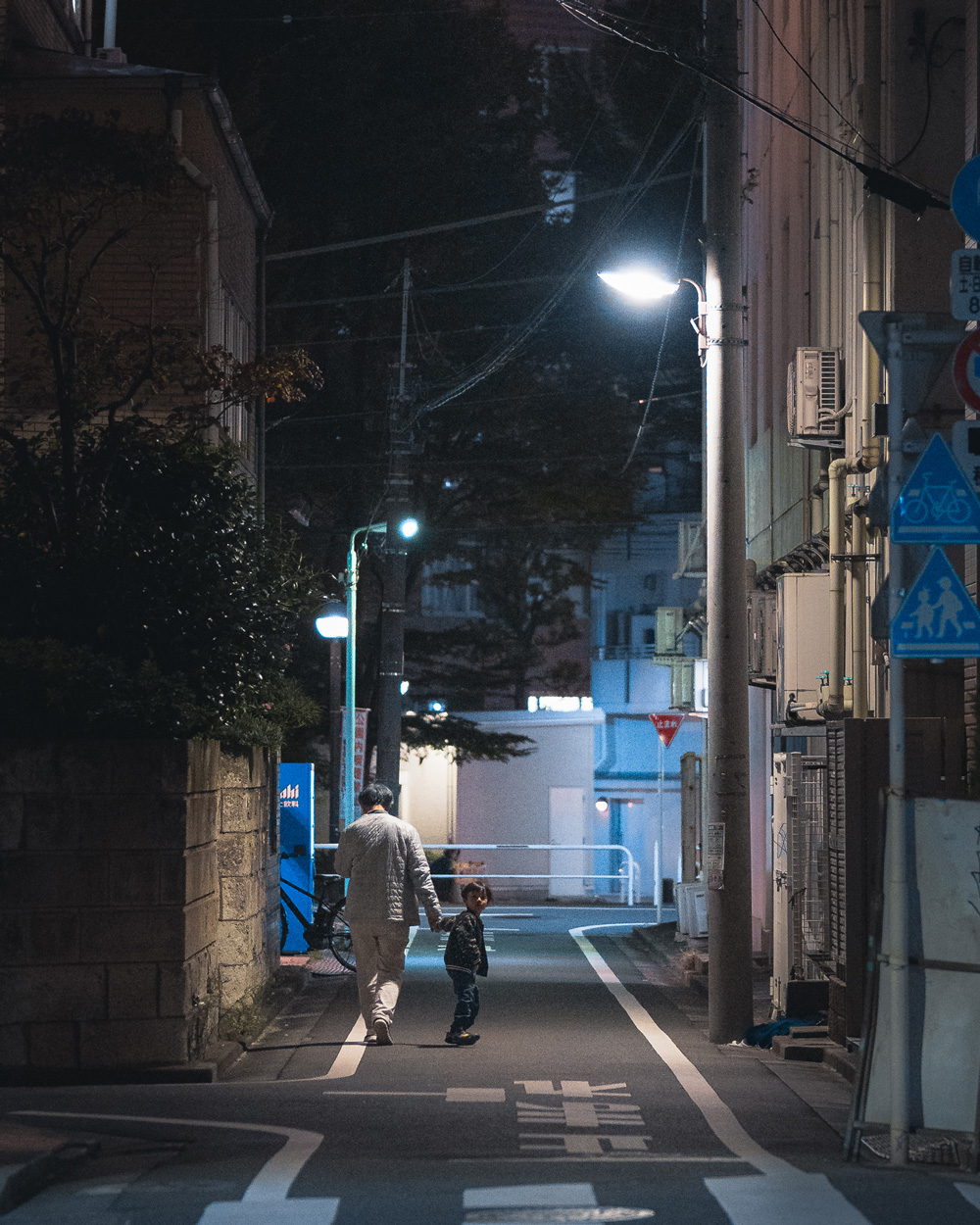
Alpha 7CR | 1/200s | f/1.2 | ISO 2000
Street Photography Tips and Techniques
Essential tips for successful street photography + Overcoming challenges in street photography
Let's get into the technical tips for street photography. Generally, I recommend beginners start with a few things: A longer focal length, mastering the art of blending in, and being able to change settings without looking. Let's dive into each one.
A longer focal length
Often, street photography can feel awkward. I mean, how often is it that it feels like when you pull out a camera, it's as if you have a giant spotlight on you and people are suddenly hyper aware that you have one and are on their best behaviour to avoid being shot by you. People do have very acute awareness of cameras in their surroundings, and it's only natural to feel self-conscious about it.
Add to the fact that in street photography, they say that a wider focal length (50mm and below) allows for more 'realism' and more 'emotion' in your shots (Side note: While I partially agree with that sentiment, it's not always true and varies highly depending on the style of images you want, the people within your compositions, and the emotions they're portraying). A wider focal length means you need to get even closer to the subject, potentially providing more awkwardness and even more fear to take the shot.
A lot of times, both of these ideas contribute to a fear of getting started for many street photographers in their first forays onto the street. One tip I often give newer street photographers is to actually start with a longer focal length. Not too long, I don't want you feeling like a paparazzi, completely disengaged with the surroundings, but I mean anywhere between 50-135mm. Using a focal length around this range will allow you enough distance between you and your subject, and hopefully that also means that they won't notice you're carrying a camera. That will allow you to take some nice candid photos without anyone really changing what they're doing and without you really influencing the scene with your presence. I personally love using the 85mm F1.4 G Master for my street photography because it provides me enough distance between myself and the subject, while also creating some nice shallow depth of field - something that was largely unachievable with cameras of old.
Once you get used to taking photos at that range of focal length, slowly start to explore wider and wider focal lengths. My two favourite lenses at this wide range are the aforementioned 40mm F2.5 G, and the 35mm F1.4 G Master, because I love taking more contextual street images that explore more of the environment and the people interacting with it, rather than just the people themselves.
Taking street photos up close and personal is tremendously more confronting as a photographer and requires a lot more nerve than doing it far away, but for some images, the proximity just can't be beat, and you can only get specific images using this method. To start with, however, try a longer focal length.
Mastering the art of blending in
This is a fun one, but hard to do. In street photography, we're so often trying to get out of the way of the scene and document it candidly; trying to allow it to play out naturally without our intervention.
Not an easy task.
Not only is your presence something that changes how other people react to the environment you're trying to capture, but if you've got a camera up to your eye, ready to take the shot, people will take notice and try to either avoid you, or they'll change how they would normally behave because of it. Not something that we want.
What we need to do is, then, blend in. Here's a few tips:
- Wear dark clothing that doesn't attract attention to you.
- Try not to show your camera so proudly; having it by your side in one hand facing away from the scene you're trying to capture works well I find.
- Find your composition, then walk a few steps out of that composition and try to relax in your surroundings; lean on a wall, pretend to stare at your phone, tie your shoes, something. Once you're ready to take that shot, step into your composition zone and take the shot quickly.
- Have your settings ready and set before you bring your camera up to your waist or eye. We'll cover this more in the next point.
- Learn how to "shoot from the hip". This involves having your camera around waist height, set to your composition using your viewfinder or even just by guessing, then taking a photo without looking at the camera at exactly the right time someone comes close. This blind shooting technique requires tremendous practice, but it's well worth it to have that skill in your toolkit.
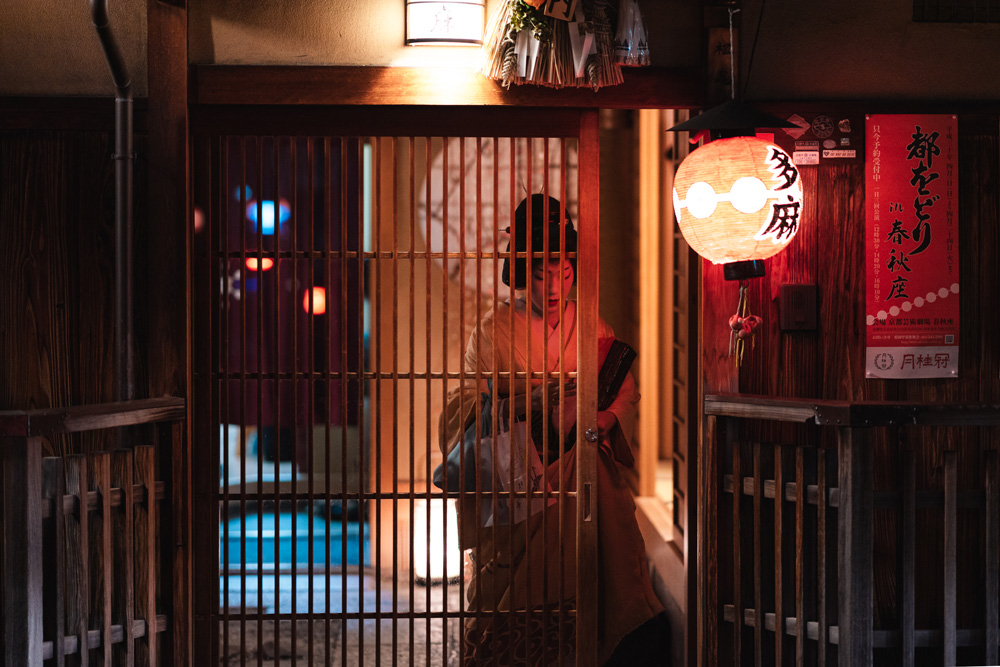
Alpha 7R III | 1/200s | f/1.4 | ISO 1600
Change settings without looking
Quite straight forward, but perhaps not as simple as it seems.
In street photography, fractions of a second matter. A moment comes and goes faster than you can blink, so you really need to be ready at all times.
One thing that helps tremendously is being able to set your shutter speed and aperture using your thumb and index finger without looking, when the camera is down by your side.
In street photography, we always need to be changing our shutter speed depending on the available light and scenario that we're in, so being able to do this without looking means that we're able to have the right settings for the right scenario at the right time and be able to take that shot as quickly as possible.
The tip here is understanding "stops of light" and how to "rack" that stop of light.
A stop of light is a measure of exposure. As it pertains to shutter speed, most of the time we need to be able to change our shutter speed 1 or 2 stops worth of exposure to speed up or slow down our shutter speed. What we can do, then, is to quickly flick the dial one full length from left to right, or from right to left. Most of the time, for most Sony cameras, one "flick" or "rack" usually ends up being one stop of light. This isn't always the case, but as you do this more and more, you get more of a feel for how over or under you are for each rack of the dial. When you're trying to change your settings quickly without looking, you can quickly rack 1 stop worth of shutter speed to speed it up, and then quickly rack 1 stop of aperture down to compensate your exposure. If you can do this well, you can change both the correct shutter speed and aperture in less than half a second.
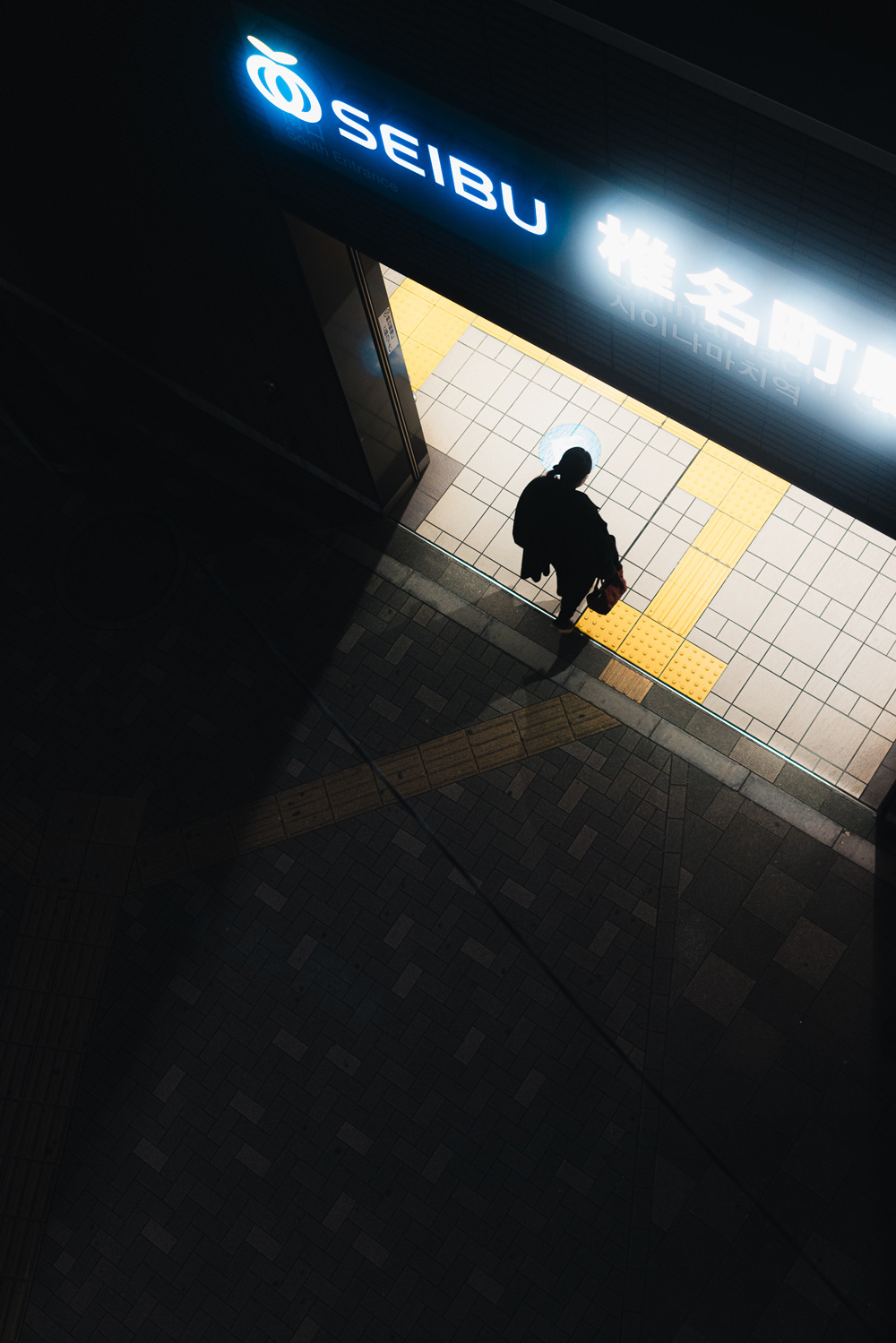
DSC-RX1RM2 | 1/200s | f/2 | ISO 1250
This is a core skill that street photographers of old used to do with manual focus lenses - a problem that we largely don't have with today's modern cameras. Street photographers used to have manual-only lenses. Meaning every time they wanted to take a shot, they would have to put the camera to their eyes, twist the focus dials, and ensure critical focus. This takes a lot of time and causes you to miss moments worth capturing. To fix this, they learned how to use the dials without looking and learned how to estimate distances and how far to twist their focus dials to compensate, all before even putting the camera up to their eyes. A very common technique here was called "zone focusing", where you can set your aperture to something small, like f8, and given a wide focal length, using hyperlocal distancing, you can ensure that everything beyond a few metres away will be in critical focus.
Today, we don't really have the focusing problem, especially with how fast the autofocus is on modern Sony cameras, but we do have issues with getting the settings right and missing moments in front of us. Getting really comfortable with changing our settings fixes that.
Conclusion
Street photography is such an important genre of photography for documenting the human condition in the current period that it is in, and it's a genre that is very near and dear to my heart, so I hope you enjoy doing it. I also hope that all of these techniques help in improving your understanding and technical ability of your street photography images.
Happy shooting.
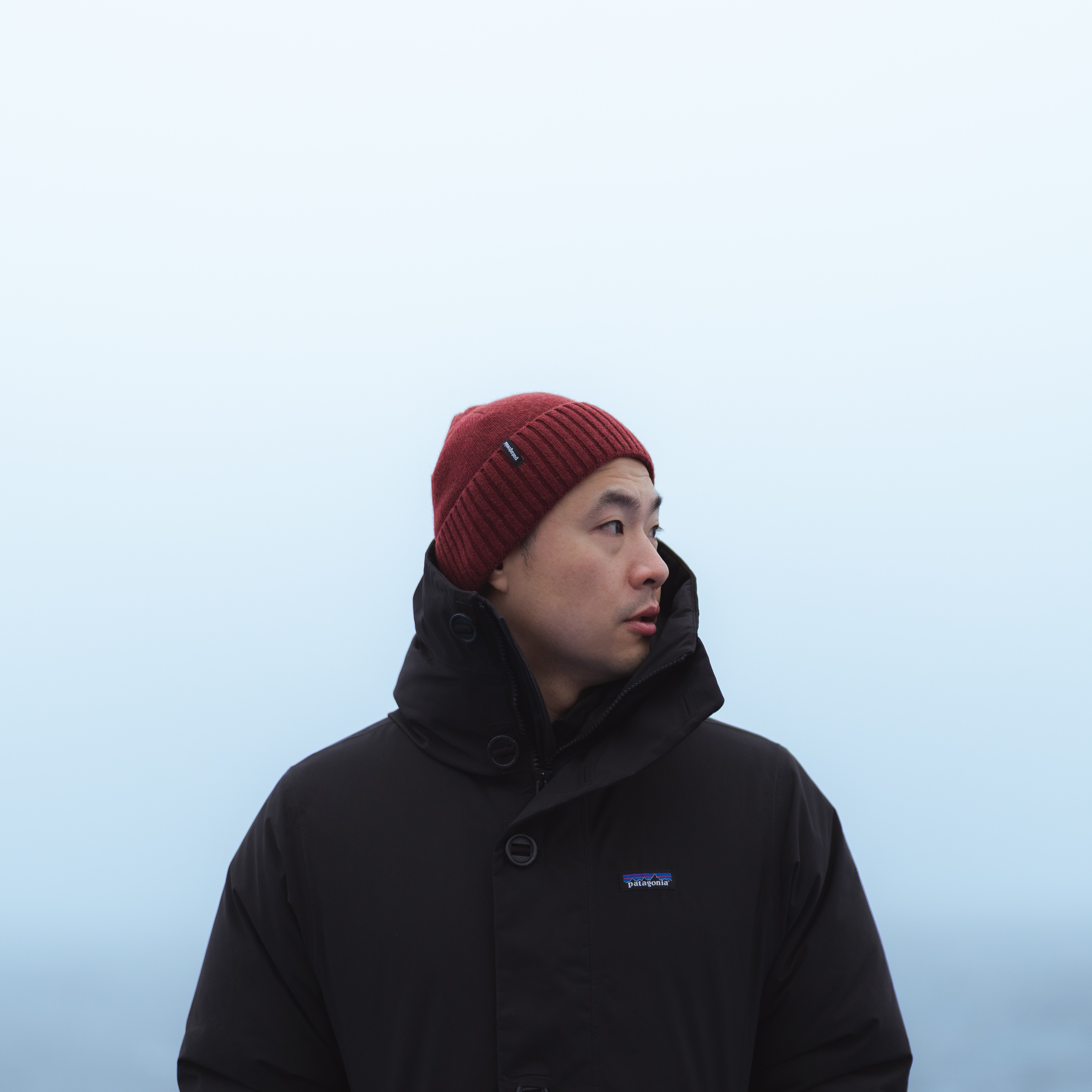
Pat Kay
Pat is an Australian award-winning travel photographer and multi-disciplinary content creator based in Tokyo, Japan.
With a passion for travel and adventure, Pat specialises in landscapes, cityscapes, aerial, lifestyle and street photography. His unique perspectives, vibrant style, and penchant for engaging storytelling through visual imagery and video has seen him work on many international campaigns working with numerous fortune 500 companies in the tourism and tech industries.
When not working on campaigns, Pat teaches photography and inspires over 600,000 photographers on his YouTube channel and Instagram.





